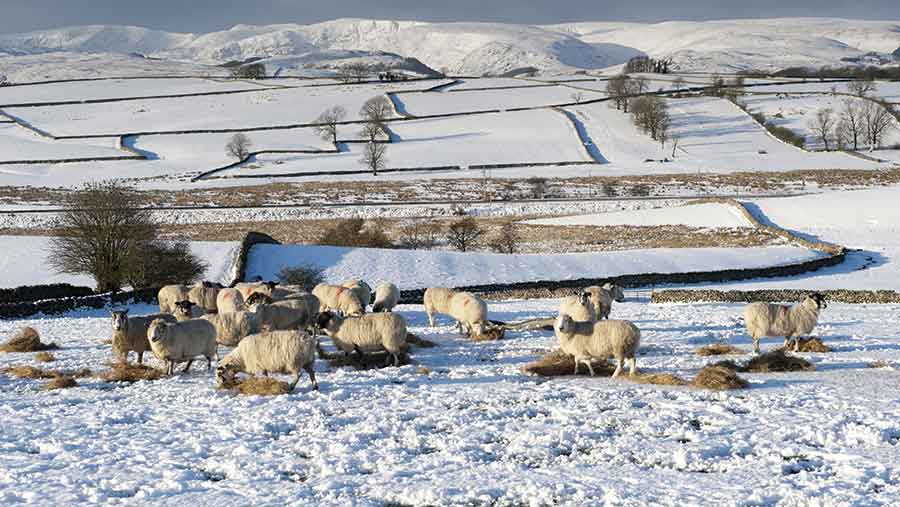Farm leaders fear rural payments divide of ‘haves’ and ‘have-nots’
 © Hutchinson/ Rex Shutterstock
© Hutchinson/ Rex Shutterstock British agriculture is a divided industry this winter – split between farmers who face a long wait for their basic payment while their neighbours have already received their money.
Banks and other agricultural lenders have been urged to remain patient when dealing with farmers left waiting for their cash. Meanwhile, growers and livestock producers who have already received their money are being warned that they risk being targeted by fraudsters.
Some 33,000 claimants were paid a total of £261m in England alone on 1 December – the first day of the payment window. But other farmers face an uncertain wait especially in Scotland, where just one in four claimants is expected to receive 70% of their money from the end of the month.
See also: One in four EU farms lost in a decade
The Rural Payments Agency (RPA) said its focus had always been on releasing the money to farmers in what had been a challenging year for the new basic payments scheme in England. Payments made so far to farmers represented at least 38% of those who claimed, it said.
But concern that the agency is initially focusing on smaller and easier-to-settle claims has been fuelled by an average payout of less than £8,000 per recipient – and the fact that there are more than 50,000 farmers in England left to pay.
NFU vice-president Guy Smith said: “When the RPA starts talking about a percentage, we want to see value as well as volume going out. We do not want to see one million £10 cheques. We want to see a good cross-section of payment claims going out.”
Mr Smith added: “A significant amount of money has gone out – and we have to congratulate the RPA for that. But the fact they have only paid just over one-third of applicants increases the anxiety among the have-nots.”
In Scotland, rural affairs secretary Richard Lochhead said the Scottish government was still on track to start 70% part-payments by the end of December. The government would shortly write to farmers to indicate the likely value of payments for the next few years, he said.
“This will provide the banks with the information they need to be able to offer their customers an appropriate level of support. The banks agreed to encourage all producers to consider their cashflow position and, if they have any concerns, to contact their bank as soon as possible.”
In Wales, most farmers will receive 80% of their full payment during December. The final 20% payment will be made to farmers next April, although a minority of complicated claims – including probate cases – will take longer.
In Northern Ireland, payments totalling £154m were made to almost 18,000 farmers on 1 December. “After a very difficult year for the industry, this will make a significant difference to our farmers,” said farm minister Michelle O’Neill.
The winners and losers
The haves
“Our payment was in the bank at 7am on Tuesday 1 December. It has really eased the burden on cashflow for us. We are a small farm – we’ve 80ha of arable and sheep. We sell lamb and seasonal game at farmers’ markets. We also do grass and maize contracting.
“We budget on the money coming in at the beginning of December. I’m a man with a tractor – we wouldn’t have gone under if it hadn’t come in on day one but it is good to have that breathing space and know we’ve got a cushion from the bank.”
Farmer contractor Lee Cox, D&B Cox, Oakley, Buckinghamshire
The have-nots
“So many people have built their businesses around the payment arriving in early December that not having it is having a huge impact – not just for farmers but for suppliers too. We are hoping to upgrade our machinery but that is on hold.
“Things are a struggle on the back of low commodity prices so it is a huge stress. It is especially bad up the hill because coupled payments won’t arrive until next spring. So far, the banks have been understanding but how long that will last, nobody knows.
Martin Kennedy, hill beef and sheep farmer, Aberfeldy, Scotland
